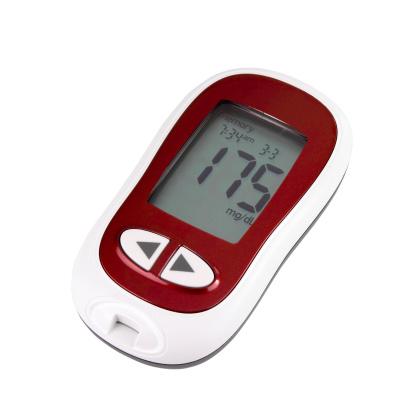Diabetes mellitus is a condition that occurs when the body is not capable of producing enough insulin or cannot respond to it the way it should, even if the production of insulin is sufficient. Insulin is a hormone that allows the body to take in glucose for energy. It is produced by the pancreas' islet cells. The most common cause of diabetes is damage or destruction of these cells, although there is no definite reason as to why this happens. It has been shown that dogs with previous cases of pancreatitis, those who are severely overweight, and those treated long-term with corticosteroids are more predisposed to developing diabetes, but any dog can be affected. There also seems to be some breed predisposition. Smaller dogs including Miniature Poodles, Dachshunds, Schnauzers, and Cairn Terriers, and some larger breeds such as Chow Chows, Keeshonds, and Samoyeds may be at higher risk. Ultimately there is insufficient insulin production which can result in hyperglycemia, or high blood sugar, and leads to a life-long disease. Diabetes is seen most often in middle-aged and older dogs, especially females, but can affect dogs of any age. It is important to know your dog’s health history and that of its relatives.
Signs
It is often said that animals with untreated diabetes will have “sweet urine” or urine that smells sweet. When there is not enough insulin for the uptake of glucose (the main sugar the body uses for energy), the excess glucose winds up in urine and is excreted. This also causes the body to dilute the now concentrated urine, meaning that your dog will need to urinate relatively frequently and, in turn, drink excessive amounts of water. You may hear your vet refer to this as “PU/PD” or polyuria/polydipsia, meaning excessive urination and drinking. These are the two most common signs of Diabetes Mellitus.
Since your dog is not able to take in the glucose it needs for energy, he or she may act very hungry and try to consume more food to get their energy levels back up. In spite of this increase in food intake, your pet may also lose weight. In later, more severe stages of diabetes or in cases that are not adequately controlled, you may see the formation of cataracts, vomiting and diarrhea.

Diagnosing
To diagnose Diabetes Mellitus, a simple test is done to measure the amount of glucose in the dog’s blood and/or urine. Normal blood glucose levels for dogs can range from 75-120 mg/dL. If a dog has diabetes, their blood glucose levels will be significantly increased. A serious form or complication of uncontrolled diabetes is a condition termed diabetic ketoacidosis (DKA). In these cases, there are are other changes in the blood and urine that point to this serious metabolic disorder.
Treatment
Because the diabetic is not producing enough of its own insulin, a replacement form of insulin will need to be administered daily at home. Your veterinarian will demonstrate how to give your dog a subcutaneous, or under-the-skin, injection and will make sure you are comfortable doing this on your own. The type of insulin and dose will also be determined by your veterinarian based on your individual dog.
Dogs with the serious metabolic disorder, DKA, may require intensive treatment in the hospital environment to stabilize the pet prior to discharging them for home care.
Periodic monitoring of blood glucose levels (blood glucose curves) may be required to fine tune the dosage and frequency of insulin administration in the diabetic patient.
Diabetes is usually a life-long disease but a very treatable one. Your dog can easily live a normal, happy life if the diabetes is controlled by an appropriate diet and the administration of insulin.
What to Expect
At the beginning of treatment, your dog will be started on a base dose of insulin and monitored routinely to determine the appropriate dose for your dog. Unfortunately there is no common or standard dose of insulin, and diabetic patients need to be managed on an individual basis. In addition, your vet may prescribe a special diet for your pet. A high-fiber diet with complex carbohydrates may be recommended to help stabilize blood glucose levels and allow your dog’s body to get the energy and nutrients it needs. It is important to keep to this diet and avoid extras like certain treats or table scraps.
Once you and veterinarian have determined that your dog’s diabetes is being managed appropriately (remember, it’s a team effort!), your dog should have a check-up every 4 to 6 months. Routine blood work and urine testing will generally be recommended at these visits to monitor your dog's overall health.
Prognosis
The outcome for a dog with a diabetes diagnosis can be a very positive one. As the owner, your role in your dog's treatment is critical and most important. It may seem overwhelming at first, but with time you will develop a routine that will become second nature. Giving the correct amount of insulin, at the right times of day, and strict diet regimens can help avoid dangerous fluctuations in your dog’s blood sugar levels. Remember - Diabetes is not curable but it is very manageable. Even with diabetes, your dog can lead a normal, happy life.
